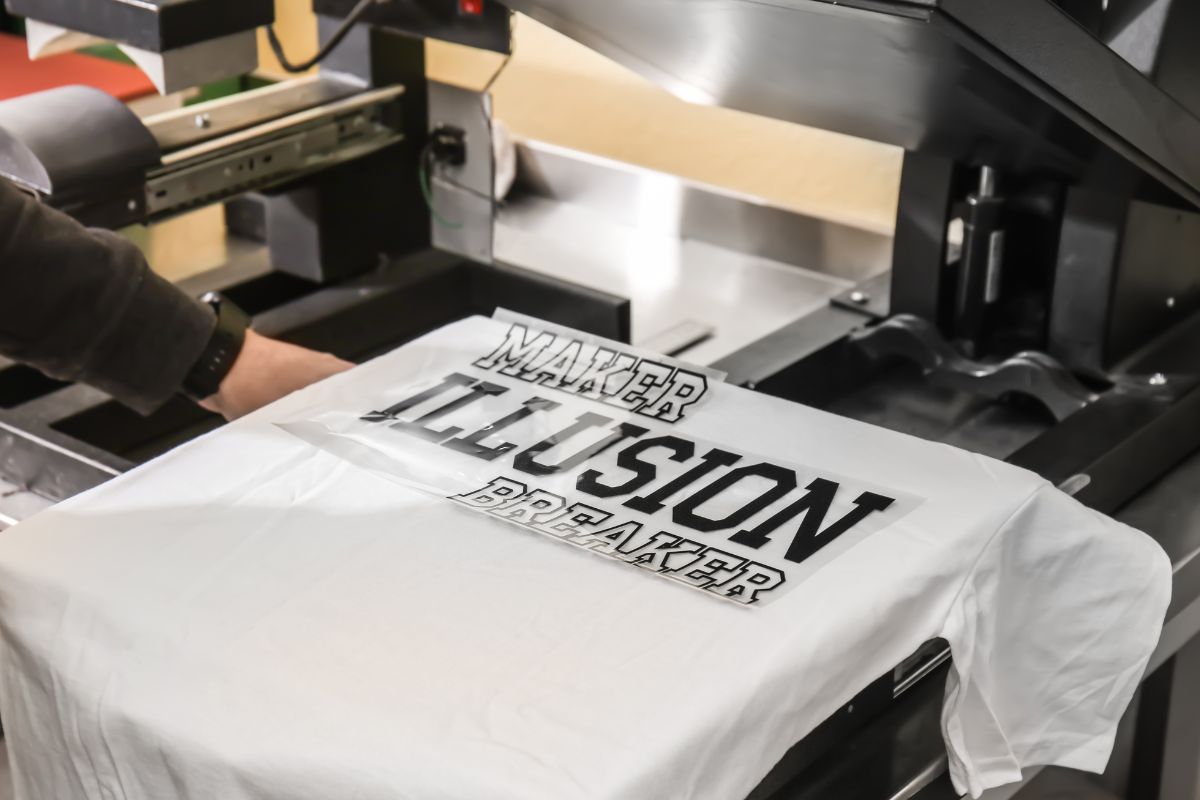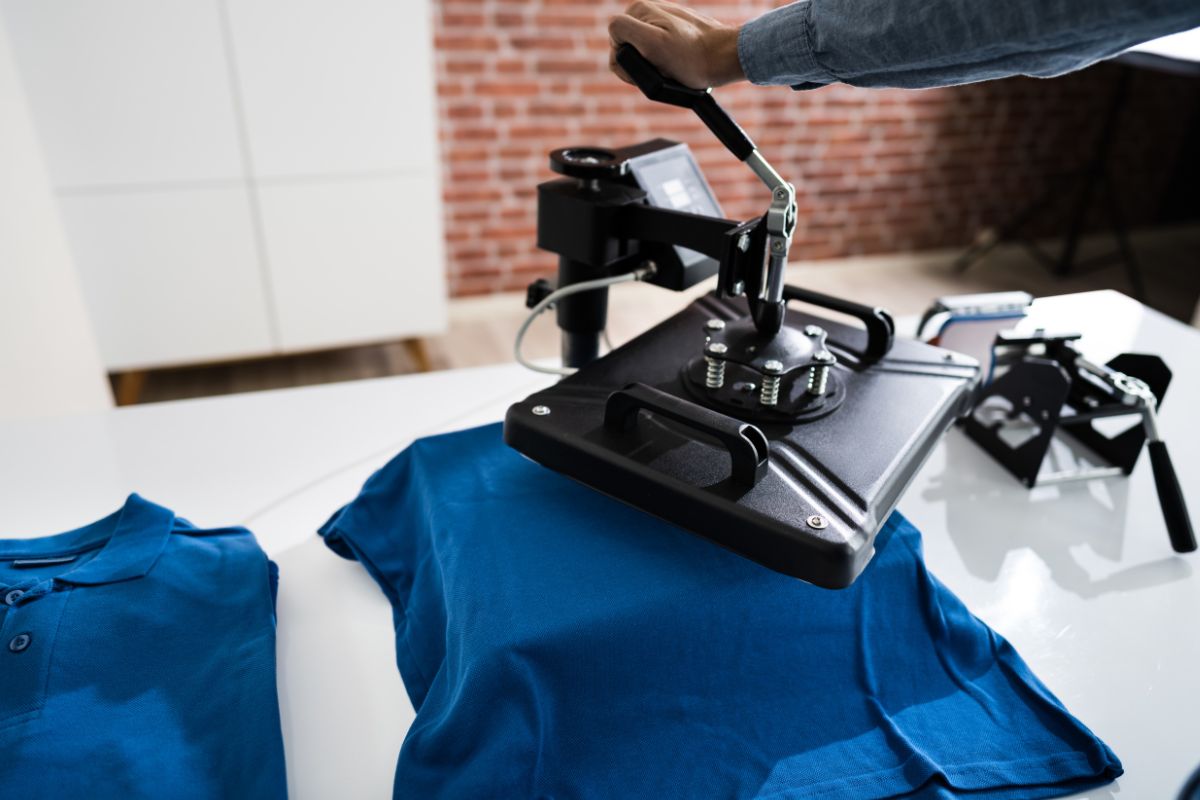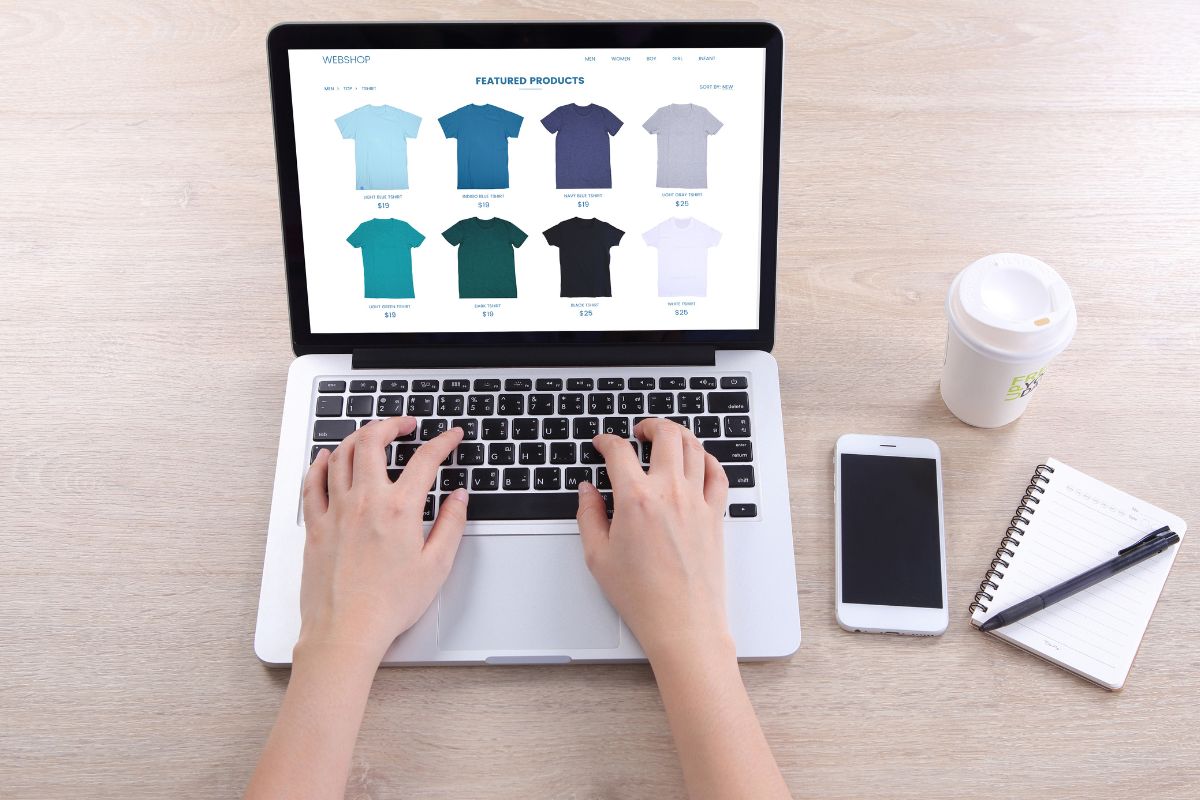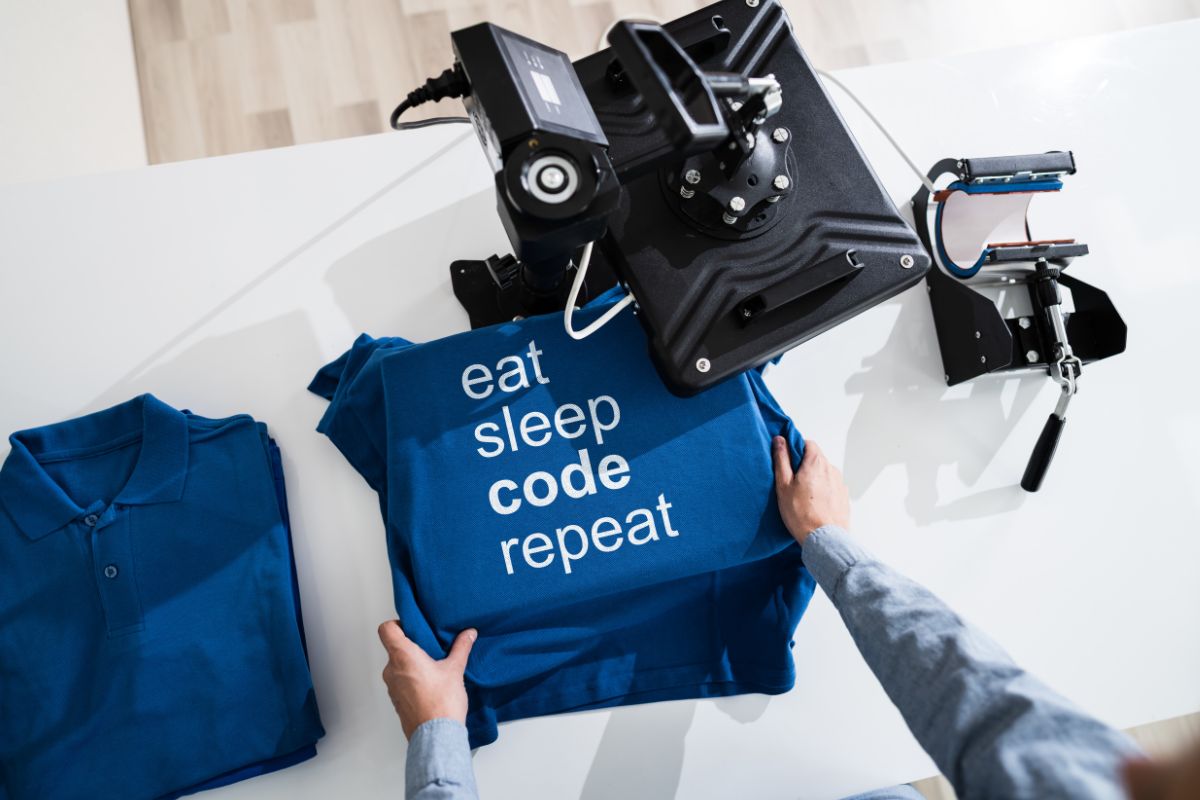Starting a t-shirt business can be an exciting venture into the world of fashion and e-commerce. As you embark on this journey, it’s essential to understand the key elements that can make your endeavor a success. The appeal of a t-shirt business lies in its relative simplicity and the universal demand for this staple wardrobe item. Whether targeting a niche market or appealing to a wide audience, the process begins with a clear plan and an understanding of your target customers.
Navigating the initial steps involves choosing your designs, selecting quality materials, and establishing your brand identity. With an online t-shirt business, you have the advantage of reaching a global customer base without the need for a physical storefront. This reduces initial overhead costs and allows you to focus on creating a strong online presence. Effective branding, combined with a user-friendly website, can set the foundation for your business’s online growth and visibility.
In the age of social media and digital marketing, promoting your t-shirt business online can drive sales and build a dedicated customer base. Leveraging social networking platforms will enable you to engage with potential customers and create buzz for your products. Understanding how to create influence, harness the power of word-of-mouth, and effectively use social media for small-business funding are crucial steps that can make your business thrive in a competitive marketplace.
Developing Your T-Shirt Business Plan
When starting at-shirt business, your business plan is a crucial tool for guiding your decisions and convincing others to invest in your vision. It should clearly detail your market analysis, niche, target audience, business model, and financial planning.
Analyzing the T-Shirt Market
To begin, conduct a market analysis to understand industry trends, competition, and consumer preferences. Identify key players and note what makes them successful. Determine your position in the market by evaluating potential market size and growth opportunities. Understanding the demand for specific t-shirt styles and the saturation of particular trends is essential.
Defining Your Niche and Target Audience
Your niche is your specialized segment of the market where you have the most to offer or where competition is lacking. This could range from eco-friendly materials to graphic tees for gamers. Align your niche with a well-defined target audience, which is the group of customers most likely to buy from you. Describing demographics, interests, and purchasing behaviors will help you craft targeted marketing strategies.
Planning Your Business Model and Budget
Your business model outlines how your t-shirt business will operate, generate revenue, and deliver value to customers. Will you hold inventory or use print-on-demand services? Consider the startup costs including equipment, materials, and marketing.
Draft a budget, factoring in funding requirements. You may need business loans or outside investors. List all potential costs, from production to marketing to shipping. Maintain a realistic approach to planning expenses and revenue projections. This can help you manage cash flow effectively and set the stage for a successful launch.
Legal Matters and Business Setup

Starting a t-shirt business requires careful consideration of legal matters including selecting the appropriate business structure, registering your business and brand, and ensuring compliance with licensing and permitting regulations. Addressing these foundational aspects effectively can create a solid legal framework for your business operations.
Choosing a Business Structure
You’ll need to decide on a business structure that best suits your needs. The structure you select will affect your liability, tax obligations, and level of regulatory burden. A Limited Liability Company (LLC) might be advantageous for protecting your personal assets, while sole proprietorship could be a simpler option if you’re the only business owner. For larger setups, you may consider forming a corporation, which is a more complex structure but offers benefits such as easier capital acquisition.
Registering Your Business and Brand Name
Once you decide on a structure, you must register your business name with the relevant state authorities to ensure it’s legally recognized. Additionally, if you have a unique brand name for your t-shirt business, securing a trademark can protect your brand and is an essential step in establishing your market presence.
Obtaining the Necessary Licenses and Permits
Operate legally by acquiring the correct licenses and permits. Common requirements for a t-shirt business could include a general business license, seller’s permit, or a home business permit if operating from your residence. Research and comply with local, state, and federal regulations to ensure that you are not operating without necessary authorization.
Creating Your T-Shirt Designs

When launching a t-shirt business, your designs are the cornerstone of your brand. They should capture the essence of your vision and appeal to your target audience.
Designing Unique and Appealing T-Shirts
To stand out in the fashion industry, your t-shirt designs should be unique and resonate with your customers. Start by brainstorming ideas that reflect your brand’s identity—whether it’s quirky graphics, minimalist styles, or eco-conscious messages. Your logo is pivotal to branding, so ensure it’s distinctive and translates well across various t-shirt colors. Consider the latest trends in graphic design but infuse your own creative twist to ensure your t-shirts remain timeless yet contemporary.
Utilizing Design Tools and Software
Leverage industry-standard tools like Adobe Photoshop to bring your t-shirt designs to life. For those on a budget or without professional graphic design experience, platforms like Canva offer user-friendly interfaces and pre-made templates that can be customized to fit your brand. These tools also provide resources to ensure your designs are print-ready and of the highest quality. Utilize vector graphics to maintain resolution across all t-shirt sizes.
Maintaining High-Quality Design Standards
Quality should never be compromised. Ensure your designs are consistently high-resolution and the color palettes are thoughtfully selected to convey the right mood and style. Keep abreast of t-shirt material trends to understand how your designs will interact with different fabric types. Test print your designs to check for any issues in scaling or color accuracy and to guarantee that the final product meets your high standards. Your commitment to quality will not only satisfy your customers but also build the reputation of your t-shirt brand.
Setting Up Your T-Shirt Production

Initiating your T-shirt business requires thorough planning for production. You’ll want to focus on selecting the right printing technique, sourcinghigh-quality materials, and effectively managing your inventory and production costs to ensure a profitable operation.
Choosing a Printing Method
Your choice of printing method is crucial as it affects the quality and production efficiency of your T-shirts. Screen printing offers vibrant, durable results, ideal for large batches. Direct-to-garment (DTG) printing is perfect for intricate designs, although it is generally slower and more suited for small orders. Heat transfer can produce full-color images but might not be as long-lasting. For a flexible business model without large upfront costs, consider print-on-demand services, which allow for a wide range of designs without the need to maintain inventory.
Selecting Quality Materials and Suppliers
Ensuring the use of high-quality material will set your brand apart. Cotton and blends are popular, but each fabric type will interact differently with printing techniques. Research and select reliable suppliers that provide the best balance between cost and quality. Look for suppliers with positive reviews and the ability to provide consistent, high-quality materials. Also, consider the ethics and sustainability practices of your suppliers to align with consumer values.
- Fabric Types:
- 100% cotton: Great for breathability.
- Polyester blends: Durable and less prone to wrinkling.
- Supplier Considerations:
- Cost-effectiveness.
- Fabric quality.
- Ethical sourcing.
Managing Inventory and Production Costs
Effectively managing your inventory is key to optimizing your production costs. A surplus involves risk and additional storage costs, while a shortage could lead to lost sales. Use demand forecasting to keep your inventory lean. For printing equipment, balance the cost with the scale of your operations. If you’re starting small, a basic heat press might suffice. Expanding businesses should consider investing in automatedscreen printing machinery or a high-quality DTG printer for greater efficiency and throughput.
- Inventory Strategies:
- Just-in-Time (JIT): Reduces excess inventory.
- Demand forecasting: Helps in anticipating sales trends.
- Equipment Choices:
- Scale-appropriate: Match your equipment to your order volume.
- Budget-conscious: Don’t overspend on advanced machinery initially.
Focusing on these elements will help build a solid foundation for your T-shirt production, with an eye on quality and cost-effectiveness.
Building Your Online Presence

In today’s digital age, establishing an online presence is crucial for the success of your t-shirt business. This means creating a seamless, branded experience where customers can find and interact with your business on the web.
Creating a Professional Website
Your website is the cornerstone of your online presence. Use a platform like Shopify, known for its versatility and ease of integration with various e-commerce features. Ensure your website has a clean design and straightforward navigation. Populate it with high-quality product images, engaging product descriptions, and easy checkout processes. Enable mobile responsiveness, as a significant portion of users shop on smartphones and tablets.
Leveraging E-Commerce Platforms
To escalate sales, your t-shirt business must harness the power of e-commerce platforms. E-commerce platforms provide you with comprehensive tools to manage your online shop, including inventory management, payment processing, and analytics. They often come with built-in SEO features to help your website rank well in search engine results, increasing visibility and driving traffic.
Utilizing Social Media for Brand Visibility
Social media is an indispensable tool for brand visibility and digital marketing. Create accounts on major platforms like Instagram, Facebook, and Twitter to showcase your t-shirt designs and company ethos. Use these channels to engage with your audience, offer customer service, and run targeted advertising campaigns. Share content regularly and collaborate with influencers to expand your reach within the online community effectively.
Marketing and Selling Your T-Shirts

Starting a successful T-shirt business requires more than just stellar designs; it’s also about the strategic marketing and expansion of sales avenues. In this section, you will discover how to harness various sales channels and marketing strategies to reach your target market effectively.
Developing Effective Marketing Strategies
In crafting your marketing plan, you’ve got to establish a strong brand identity. This means having a memorable name and a recognizable logo that resonates with your audience. Capitalize on social media’s vast reach to showcase your T-shirts, using visually driven platforms like Instagram and Facebook to build a community around your brand. Consider leveraging influencer partnerships to tap into existing follower bases. Furthermore, explore search engine optimization (SEO) tactics to increase visibility for your online t-shirt store.
Identifying Sales Channels
For selling your T-shirts, diversify beyond just a standalone eCommerce platform. Utilize established third-party marketplaces like Amazon or eBay to benefit from their massive audiences. Also, look into print on demand services such as Printful, which can integrate with your store to fulfill orders directly. This approach reduces inventory risk and can help scale your business swiftly. Remember, the goal is to place your T-shirts where your target market shops.
Engaging with Your Target Market
Understanding and connecting with your target market is pivotal. Use analytics tools to gather data about your customers and tailor your marketing efforts to their preferences. Communication is a two-way street, so actively seek feedback and engage with your audience through social media comments, direct messages, and email campaigns. Providing a personal touch can foster brand loyalty and turn one-time buyers into repeat customers.
Managing Business Operations

When starting a t-shirt business, it’s crucial to monitor your profit margins, establish solid relationships with vendors, and implement efficient business management practices to thrive in a competitive market.
Optimizing Profit Margins
To optimize your profit margins, you should evaluate both the direct costs of your t-shirts and the overhead expenses associated with running your business. Direct costs include materials andprinting options, while overhead encompasses rent, utilities, and indirect labor. By reducing costs where possible—for instance, by selecting cost-effective printing options—you can maintain competitive pricing and increase profitability.
- Direct Costs: Materials, labor, printing
- Overhead: Rent, utilities, marketing
Partnering with Vendors for Better Deals
Building relationships with vendors can lead to more favorable purchase terms for your t-shirt materials. As abusiness owner, don’t hesitate to negotiate with suppliers. When you establish yourself as a reliable partner, you might secure discounts or better payment terms, which can significantly lower your costs.
- Negotiation Goals:
- Discounts on bulk orders
- Favorable payment terms
Streamlining Business Management
Efficient management is key for entrepreneurs starting an online business or side hustle. Adopt an ASI (Application Service Interface) to streamline operations and manage orders, inventory, and customer data. By leveraging technology, you can reduce manual tasks and focus on growing your t-shirt business.
- Key ASI Benefits:
- Simplified order processing
- Accurate inventory tracking
- Enhanced customer relationship management
Growth and Expansion

As your t-shirt business begins to gain traction, careful planning for growth and expansion is crucial. Focusing on increasing your brand’s presence, understanding competitors, establishing efficient production, and seizing new market opportunities will set a solid foundation for scaling.
Scaling Your Business for Growth
When you scale your business, it’s essential to retain the quality and branding that your customers have come to expect. This might involve investing in better printing technology or hiring additional staff. As an entrepreneur, analyze your current market performance and devise a strategy that surpasses competitors without compromising your brand’s core values.
Expanding Product Lines and Services
Expanding your product lines and services must be done with a keen eye on the market demand and competition. Diversification might include introducing various t-shirt designs, incorporating sustainable materials, or offering customization services. Remember that each new product line should resonate with your brand, avoiding the pitfalls that can come from attempting to launch in an already saturated market.
Exploring Brick-and-Mortar Opportunities
While the digital landscape offers immense outreach, there’s still value in exploring brick-and-mortar opportunities. As a sole proprietorship grows, opening a physical store can create a tangible brand experience for your customers. If considering a partnership, ensure it aligns with your long-term vision and does not dilute the essence of your entrepreneurial spirit. This step should be a calculated one, taking into account competitors and the potential to create a unique retail experience.
Essential Resources and Tools for Starting Your T-Shirt BusinessResources and Tools

Starting your t-shirt business demands a tactical approach, particularly when it comes to leveraging online platforms and creative tools. With the right resources and services, you can effectively design, market, and sell your products.
Utilizing Online Marketplaces and Creative Services
Online marketplaces comprise the backbone for selling your t-shirt designs. Etsy and Redbubble offer artist-centric communities where custom designs can thrive. For more general e-commerce capabilities, consider platforms like Zazzle. When creating designs, Placeit offers mockups and design templates to visualize your t-shirts before production.
- FiverrandUpwork: Hire freelancers for logo design, marketing, and more.
- Creative Market: Access graphics and fonts for unique t-shirt designs.
Finding Inspiration and Trend Analysis
Staying ahead of the curve is essential in the t-shirt business. Use Google Trends to analyze current fashion trends and popular themes or dive into communities like Reddit to gauge customer interests. These tools allow you to make data-driven decisions about your next t-shirt line.
- Check trend reports and what’s popular on Redbubble and Etsy.
- Participate in relevant Reddit communities for real-time feedback and ideas.
Accessing Funding and Financial Resources
Starting a business often requires upfront capital. Crowdfunding platforms could be a way to generate pre-sales and gauge interest. For a more traditional approach, look into small business grants, which can provide a financial boost without the need to repay.
- Printify: Integrates with various marketplaces for easy print-on-demand services.
- Reviewcrowdfunding successes on platforms such as Kickstarter for strategies.
Select the best combination of these resources and tools to ensure the foundation of your t-shirt business is strong and capable of growth.
Frequently Asked Questions
In this section, you’ll discover everything you need to know about getting a T-shirt business off the ground, from initial steps and cost-saving strategies to legal requirements and profitability evaluation.
What are the basic steps to start a T-shirt business from home?
To start a T-shirt business from home, you first need to create a business plan outlining your vision, target market, and the designs you plan to sell. Next, source quality materials and reliable printing equipment or services. Finally, set up an online platform to showcase your products and manage sales efficiently.
What is the least expensive way to begin a T-shirt business?
The least expensive way to begin is to launch a print-on-demand store online. With this business model, you partner with a supplier who prints and ships T-shirts as orders come in, eliminating the need for upfront inventory and reducing the financial barriers to entry.
What equipment and materials are essential when starting a T-shirt business?
When starting, you will need a high-quality printer for the T-shirt designs, heat press machines for applying graphics, blank T-shirts to print on, and design software to create your T-shirt artworks. Quality materials will ensure your products meet customer expectations.
Can a T-shirt business be started with a minimal budget, and how?
Yes, a T-shirt business can be started on a minimal budget by using a drop-shipping model, choosing a cost-effective printing service, and using social media as a free marketing tool. Keep initial designs simple and scale up as the business grows and generates revenue.
What are the legal considerations, such as forming an LLC, when starting a T-shirt business?
When starting a T-shirt business, consider forming an LLC to protect personal assets and gain potential tax benefits. Check local and state regulations to ensure compliance with business licenses, sales tax collection, and any zoning laws for operating a business from home.
How can I determine if a T-shirt business will be profitable?
To determine profitability, analyze market demand, set competitive pricing, and calculate your cost of goods sold, including production, marketing, and operational expenses. Continuous monitoring of sales and customer feedback will provide insight into your business’s financial health.



